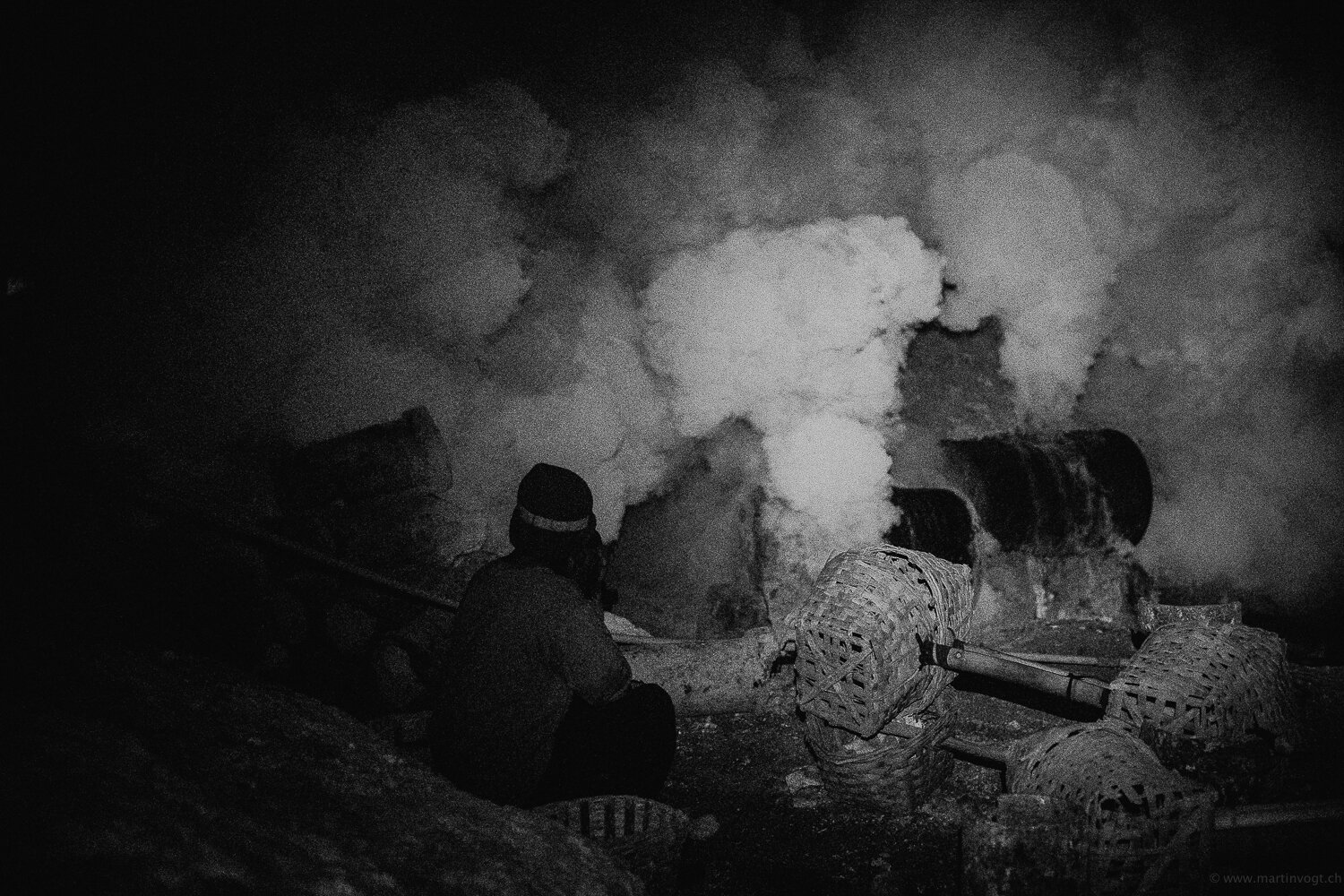Digging Devil’s Gold - Sulphur Mining
Sulphur- the toxic natural element that seeps from the bowels of East Java’s active Kawah Ijen volcano is incongruous with human life - it stings the eyes, burns the lungs, and corrodes the skin, a portrait of bone-crushing physical labor.
The Ijen crater rises to 2,386m, with a depth of over 175m, making it one of the world's largest craters. Sulphur mining is a major industry in the region, made possible by an active vent at the edge of a lake, but the work is not without risks. The sulphur extraction at Kawah Ijen has been active since 1968 and hosts one of the last remaining active sulphur mines in the world,
In March 2020 I went to Indonesia inside “the womb” of the Kawah Ijen volcano in East Java. The mine produces 13-14 tons of sulphur per day, which is mainly exported to China and Southeast Asia, primarily to the pharmaceutical, sugar, rubber and cosmetics industries.
A miners carries a load of sulfur along a rocky track back up the inner walls of the Kawah Ijen crater
.
About 25 and 250 porters (roughly 250 individuals who face excruciating heat, toxic fumes, and huge loads in exchange for about five dollars a trip.
To get to the sulphur, porters must climb the side of the volcano and descend into the crater, They toil in arduous conditions to mine sulfur from the depths of the crater, near the world's largest highly acidic lake (a measured pH as low as 0.5!), filled with turquoise water.
A miner takes a drag on his cigarette as he breaks up pieces of sulphur at night in the Kawah Ijen crater
Every day, they make the arduous trek up Kawah Ijen’s three kilometres slopes under the cover darkness before descending another 1000 meter into the crater. A thick cloud of smoke erases the sky over Mount Kawah Ijen, the scent of burnt matches saturates the air.
A miner's headlamp cuts through the darkness and volcanic gas. Miners often begin their work at night before the sun's heat becomes too oppressive
A network of man-made ceramic pipes funnels the gases responsible for precipitating elemental sulphur. If conditions allow, the sulphfur gas condenses and then solidifies into the chunks the miners are looking for.
The air at the crater is thick with toxic volcanic gas, and miners often don’t use proper protective equipment.
The miners carry the solidified yellow sulphur blocks from the crater floor to the rim for as many hours a day as they can tolerate, paid by the kilogram of sulphur they extract. A worker, depending on his strength and stamina, can carry on average 2 loads of 60-80 kilos per day, earning an average of five dollars each trip. (a salary of $10 for their two daily trips at approximately 8 hours of labor)
Their work is extremely arduous, exhausting and they are constantly exposed to a hostile and unsafe environment. Even though they have been provided appropriate protective masks, they only rarely use them since their physical efforts and breathing abilities are hindered by the apparatus. Mining is one of the highest paid professions in the region, and the workers are well-respected members of their communities.
✭Explore. Dream. Discover.✭
©2020 www.martinvogt.ch








